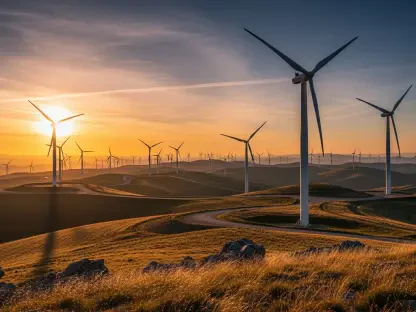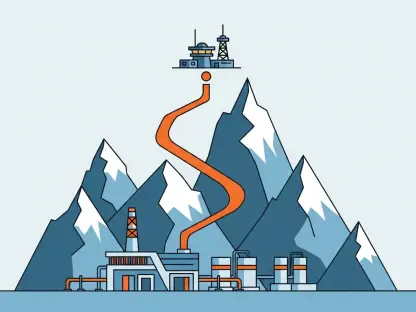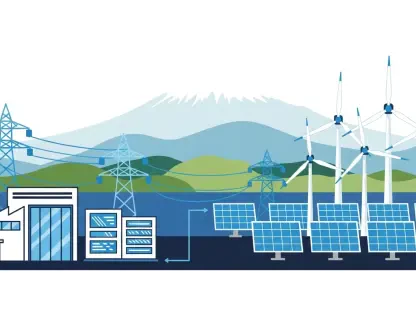The European wind industry’s recent proposal for a “New Offshore Wind Deal for Europe” has spurred conversations about the continent’s energy security, economic growth, and decarbonization efforts. This ambitious plan calls for European governments to auction at least 100 gigawatts (GW) of new offshore wind capacity from 2031 through 2040. The proposal leverages two-sided Contracts for Difference (CfDs) to mitigate investment risks and secure bankable projects. By coordinating and distributing this build-out evenly over time, the goal is to enhance market predictability and optimize the supply chain, aiming for an impressive 10 GW commissioned annually.
The proposal arrives at a critical time when Europe is grappling with challenges related to energy weaponization, industrial competitiveness, electricity affordability, and decarbonization commitments. As such, offshore wind energy emerges as a pivotal solution, having showcased its scalability and cost-effectiveness over the past decade, providing reliable electricity for millions of households. However, realizing the goals set forth in this proposal demands significant actions and commitments from both political leaders and industry stakeholders.
Accelerating Offshore Wind Installations
Path to 100 GW
To meet the proposed targets, annual offshore wind installations must accelerate to 15 GW by the 2030s, a considerable ramp-up from current levels. Central to the proposal’s success is a firm political commitment to support these initiatives, optimizing auction frameworks, and establishing consistent commissioning schedules. Such political will would assure investors, reduce uncertainties, and maintain commercial viability even amidst potential challenges.
However, obstacles such as increased investment uncertainty, insufficient electrification measures, and high-risk auction structures pose significant threats to attaining these goals. Therefore, it is imperative for European governments to provide a stable and supportive regulatory environment to de-risk investments and foster an atmosphere conducive to significant industry growth. Coordinated efforts on financing and advancing grid infrastructure will also be paramount to ensuring steady progress.
Overcoming Investment Barriers
The proposal highlights the need for clear, transparent, and low-risk frameworks to attract investment and ensure the commercial viability of offshore wind projects. Two-sided CfDs play a crucial role here, helping to create bankable projects by providing revenue stability for investors, reducing exposure to market volatility, and ensuring long-term financial sustainability. This approach is expected to bolster investor confidence by guaranteeing a predictable return on investment.
Furthermore, consistent and paced commissioning schedules are vital. By carefully timing these projects, the wind industry can optimize its operations, preventing bottlenecks in the supply chain and ensuring a smooth flow of resources and labor. Such a systematic approach not only supports industrial competitiveness but also encourages technological advancements, driving down costs and improving the efficiency of offshore wind installations.
Industrial Commitments and Economic Impact
Scaling Manufacturing Capacity
The wind industry has pledged to commit capital investment in projects and scale up manufacturing capacity to meet the ambitious targets laid out in the proposal. This entails ramping up production of critical components such as turbines, blades, and substations, alongside expanding fabrication facilities to handle the increased demand. By achieving economies of scale, the industry aims to reduce the overall cost of offshore wind energy by 30 percent by 2040, thereby lowering the electricity costs for consumers.
This would translate into substantial savings for European households and businesses, alongside significant reductions in greenhouse gas emissions. The wind industry’s commitment to reducing costs and enhancing affordability aligns with broader goals of enhancing energy security and resilience, as well as supporting economic growth across Europe. Additionally, the focus on coastal communities promises valuable socio-economic benefits, including creating high-quality jobs and fostering local investments.
Delivering Value to Communities
Offshore wind energy projects stand to generate substantial economic activity and employment opportunities, particularly in coastal regions. The proposal champions comprehensive community engagement, ensuring that localities not only benefit from cleaner energy but also thrive economically. Investments in local infrastructure, training programs, and workforce development initiatives are crucial to delivering value to these communities.
Moreover, reducing electricity bills for consumers contributes positively to household budgets and supports overall economic stability. The wind industry’s role in bolstering both energy security and industrial competitiveness positions Europe as a leader in renewable energy deployment, showcasing a commitment to sustainable development and long-term environmental stewardship.
Ensuring Strategic Growth
Coordinated Policy Measures
For the New Offshore Wind Deal to succeed, a holistic approach encompassing accelerated electrification, substantial grid improvements, and financial support for energy-consuming industries is essential. European governments must align policies with the proposal’s objectives, facilitating swift implementation and overcoming infrastructural barriers. This includes advancing research and development initiatives to innovate and improve offshore wind technology continuously.
Equally important is the development of robust grid infrastructure capable of accommodating increased offshore wind capacity. Modernizing grids not only ensures reliable energy distribution but also mitigates potential issues such as bottlenecks or outages. Financial incentives and policy frameworks that encourage investment in grid upgrades will be indispensable.
Meeting Projected Installations
Achieving the target of 15 GW annual installations by the 2030s requires meticulous planning and coordinated efforts. Governments must work closely with industry stakeholders to identify optimal locations, streamline permitting processes, and ensure timely execution of projects. Addressing logistical challenges and fostering collaboration across borders will be crucial in maintaining the momentum necessary to meet these ambitious goals.
Incorporating advanced technologies and best practices into offshore wind projects will further enhance operational efficiency and effectiveness. Continuous innovation will ensure competitive pricing, making offshore wind energy a viable and attractive option for countries striving for energy security and environmental sustainability.
Paving the Way for Europe’s Energy Future
The European wind industry’s recent proposal for a “New Offshore Wind Deal for Europe” has ignited discussions about the continent’s energy security, economic growth, and decarbonization initiatives. This bold plan urges European governments to auction at least 100 gigawatts (GW) of new offshore wind capacity from 2031 to 2040. The proposal utilizes two-sided Contracts for Difference (CfDs) to reduce investment risks and ensure viable projects. By evenly distributing this build-out over time, the aim is to improve market predictability and optimize the supply chain, targeting 10 GW commissioned yearly.
The proposal comes at a crucial juncture when Europe faces challenges related to energy weaponization, industrial competitiveness, electricity affordability, and meeting decarbonization targets. Offshore wind energy, demonstrated to be scalable and cost-effective over the past decade, offers a key solution, delivering reliable power to millions of households. However, achieving the outlined goals necessitates substantial efforts and commitments from both political leaders and industry stakeholders.









